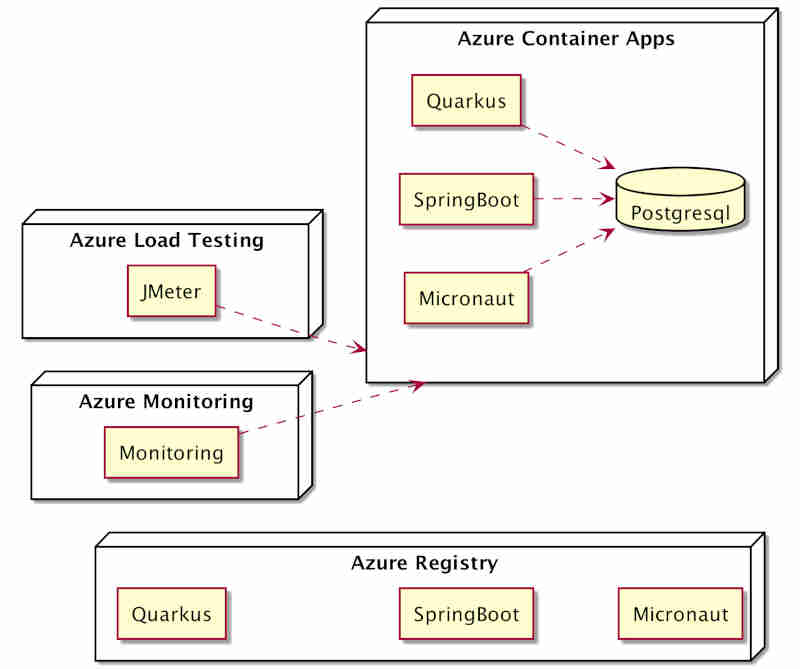| Azure Workshop with Quarkus, Spring Boot and Micronaut |
| Written by Nikos Vaggalis | |||
| Thursday, 27 April 2023 | |||
|
This free self-paced workshop shows how to develop sample microservices in Quarkus, Spring Boot and Micronaut as well as how to package them in Docker containers, deploy them and monitor their performance. As if going through the modern workflow of packaging and deploying microservices wasn't important enough, add to that coding them in modern Java runtimes/frameworks. For each the workshop implements a few simple CPU and memory consuming algorithms and packages them into microservices, accessible through a REST endpoint which executes them. The backend uses a repository to store the results of the algorithms execution in a relational database. But that's not all; after the coding part is completed, it goes to shows how to deploy them on Azure Container Apps by packaging them in Docker images and afterwards applying some load on them in order to monitor them, scale them, checking their logs, etc. The procedures of:
are runtime agnostic. What changes is the development of the microservice in each of Quarkus, Spring Boot and Micronaut. That exercise acts as a comparison and a good starting point
However, it doesn't extend to benchmarking every runtime but since all the collected metrics are being stored in the backend PostgreSQL database in the distinct tables Statistics_Quarkus, Statistics_Micronaut and Statistics_SpringBoot, deriving conclusions is left as an exercise for the reader. Having a good understanding of those metrics is eye opening because :
The grand finale goes Native, where we compile the microservices with GraalVM and then load test them to check the performance gains, if any. All in all, while Azure-centric, the principles of developing, packaging and deploying apps on a Cloud platform are common, as such the educational value is transferable. The real deal however was learning to code under the three modern microservices frameworks of Java.
More InformationRelated ArticlesAn Attempt To Make Java Easier To Learn The Perfect Course On Java Basics
To be informed about new articles on I Programmer, sign up for our weekly newsletter, subscribe to the RSS feed and follow us on Facebook or Linkedin.
Comments
or email your comment to: comments@i-programmer.info |
|||
| Last Updated ( Thursday, 27 April 2023 ) |



